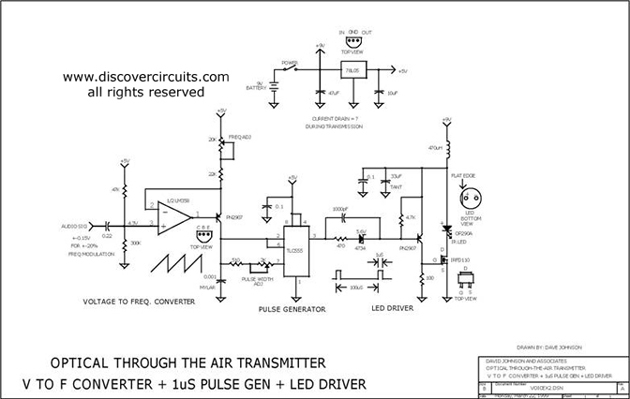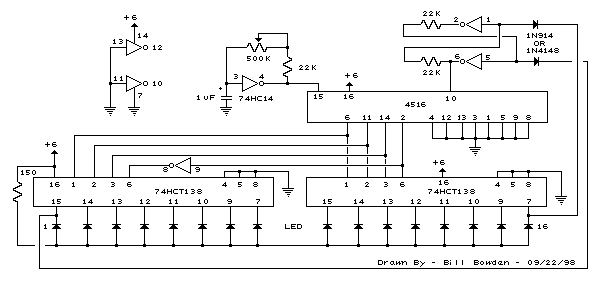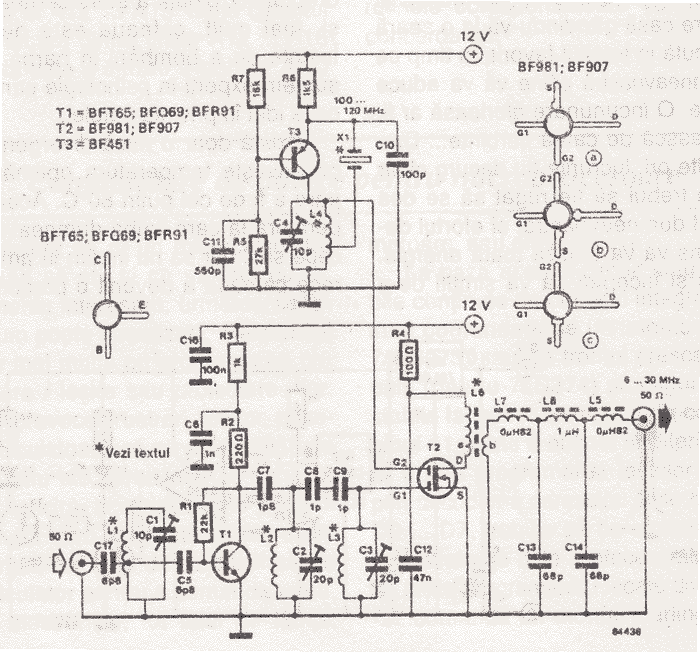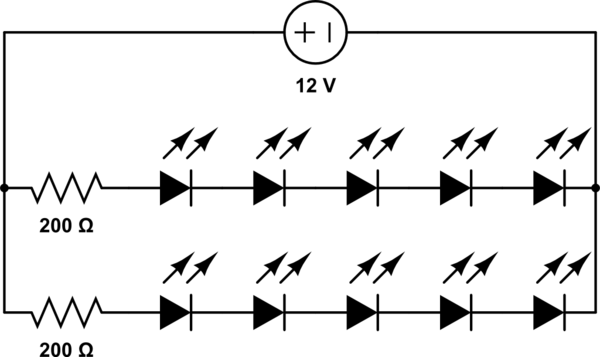
VOLTAGE TO FREQUENCY CONVERTER + 1uS LED PULSE DRIVER

This circuit receives the signal from the amplifier and emits powerful 1μs infrared light pulses from a low-cost LED, which are frequency modulated by the audio information. The 10kHz center frequency of the pulse stream is sufficiently low, allowing a standard infrared LED to emit ten times more light than conventional long pulse techniques.
The circuit operates by first processing the incoming audio signal through an amplifier, which enhances the signal strength for modulation. The modulated signal is then used to drive a standard infrared LED, which is capable of producing short-duration pulses of infrared light. The use of a 1μs pulse width ensures that the emitted light is intense and can be effectively used in various applications such as remote control systems or data transmission.
The frequency modulation at 10kHz is critical as it allows the infrared LED to operate efficiently, maximizing its light output while maintaining a manageable thermal load. By employing frequency modulation, the circuit can encode audio information onto the light pulses, facilitating communication through optical means. This method is particularly advantageous in environments where radio frequency communication is not feasible or is subject to interference.
To ensure optimal performance, the circuit may include additional components such as resistors for current limiting, capacitors for filtering, and possibly a microcontroller for more sophisticated modulation techniques. The overall design emphasizes cost-effectiveness while delivering high-performance optical transmission capabilities.This circuit receives the signal from the above amplifier and launches powerful 1uS infrared light pulses from a low cost LED that are frequency modulated by the audio information. The 10KHz center frequency of the pulse stream is low enough so a standard infrared LED can emit ten times more light than conventional long pulse techniques.
The circuit is descr.. 🔗 External reference
The circuit operates by first processing the incoming audio signal through an amplifier, which enhances the signal strength for modulation. The modulated signal is then used to drive a standard infrared LED, which is capable of producing short-duration pulses of infrared light. The use of a 1μs pulse width ensures that the emitted light is intense and can be effectively used in various applications such as remote control systems or data transmission.
The frequency modulation at 10kHz is critical as it allows the infrared LED to operate efficiently, maximizing its light output while maintaining a manageable thermal load. By employing frequency modulation, the circuit can encode audio information onto the light pulses, facilitating communication through optical means. This method is particularly advantageous in environments where radio frequency communication is not feasible or is subject to interference.
To ensure optimal performance, the circuit may include additional components such as resistors for current limiting, capacitors for filtering, and possibly a microcontroller for more sophisticated modulation techniques. The overall design emphasizes cost-effectiveness while delivering high-performance optical transmission capabilities.This circuit receives the signal from the above amplifier and launches powerful 1uS infrared light pulses from a low cost LED that are frequency modulated by the audio information. The 10KHz center frequency of the pulse stream is low enough so a standard infrared LED can emit ten times more light than conventional long pulse techniques.
The circuit is descr.. 🔗 External reference
Warning: include(partials/cookie-banner.php): Failed to open stream: Permission denied in /var/www/html/nextgr/view-circuit.php on line 713
Warning: include(): Failed opening 'partials/cookie-banner.php' for inclusion (include_path='.:/usr/share/php') in /var/www/html/nextgr/view-circuit.php on line 713





